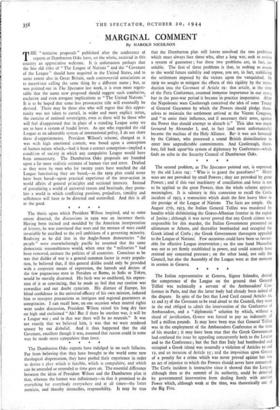The Dumbarton Oaks experts have indulged in no such fallacies.
Far from believing that they have brought to the world some new theological dispensation, they have pooled their experience in order to devise a plan which is feasible, which is compulsive, and which can be amended or extended as time goes on. The essential difference between the ideas of President Wilson and the Dumbarton plan is that, whereas the former was inflationary—in that it promised to do everything for everybody everywhere and at all times—the latter restricts, and thereby intensifies, responsibility. It may be true
that the Dumbarton plan still leaves unsolved the two problems which must always face those who, after a long war, seek to evolve a system of guarantee ; • but these two problems are, in fact, in- soluble. The first of these problems is that, in seeking to assure to the world future stability and repose, you are, in fact, stabilising the settlement imposed by the victors upon the vanquished. In 1919 we sought to mitigate the effects of this rigidity by the intro-. duction into the Covenant of Article 19: that article, at the time of the Paris Conference, assumed immense importance in our eyes ; but in the post-war period it became in practice inoperative. After the Napoleonic wars Castlereagh conceived the idea of some Treaty of General Guarantee by which the Powers should pledge them- selves to maintain the settlementarrived at the Vienna Congress, and " to unite their influence, and if necessary their arms, against the Power that should attempt to disturb it." This idea was much favoured by Alexander 1, and, in fact (and most unfortunately) became the nucleus of the Holy Alliance. But it was not favoured by the Cabinet, who possessed a sound British disinclination to enter into unpredictable commitments. And Castlereagh, there- fore, fell back uponshis system of diplomacy by Conference—which finds an echo in the Security Council of Dumbarton Oaks.
• * * *


























 Previous page
Previous page